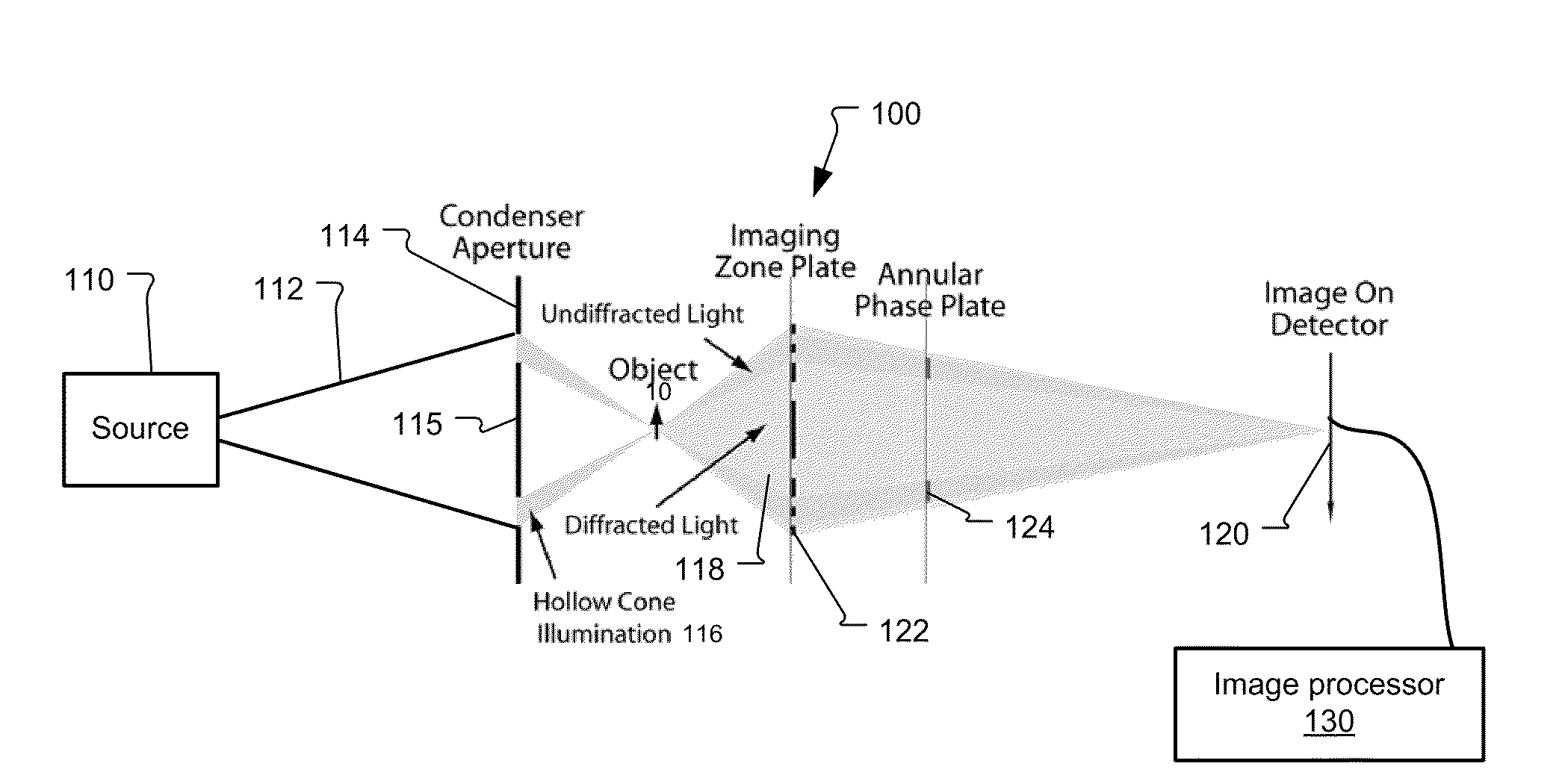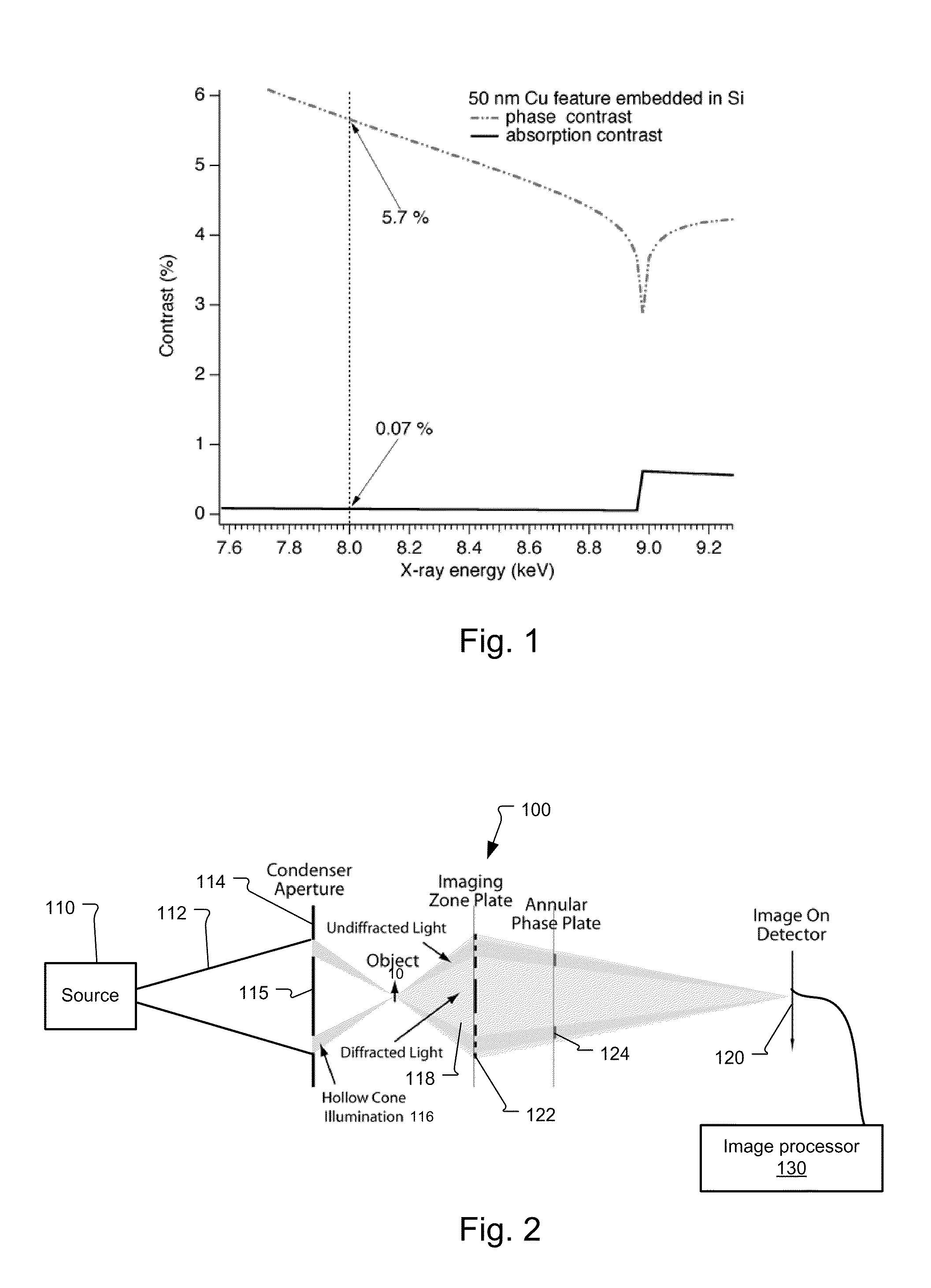System and method for quantitative reconstruction of Zernike phase-contrast images
a phase contrast image and quantitative reconstruction technology, applied in the field of system and method for quantitative reconstruction can solve the problems of complex image interpretation, complex image processing, and inability to accurately represent features, so as to achieve the effect of reducing the artifacts of zernike phase contrast images
- Summary
- Abstract
- Description
- Claims
- Application Information
AI Technical Summary
Benefits of technology
Problems solved by technology
Method used
Image
Examples
Embodiment Construction
[0021]Many types of specimens exhibit higher phase contrast than absorption contrast. For example, biological samples studied with visible light, electron, or x-ray microscopy and light metals and ceramic materials examined using x-ray microscopy can often be better analyzed using phase contrast.
[0022]FIG. 1 shows the phase and absorption contrast of a 50 nanometer (nm) sized copper feature in a silicon substrate for a range of different x-ray energies. The contrast is defined here as:
[0023]C=Ipeak-IvalleyIpeak+Ivalley.
[0024]Note that absorption generates relatively weak contrast except at copper's absorption edge at 9 keV. In comparison, phase contrast dominates with sometimes several orders of magnitude higher contrast. This advantage in intrinsic contrast makes phase contrast better suited for imaging specimens by bringing benefits of lower dose, shorter exposure time, and better image quality.
[0025]FIG. 2 shows a typical full-field imaging microscope 100.
[0026]Radiation 112 is g...
PUM
 Login to View More
Login to View More Abstract
Description
Claims
Application Information
 Login to View More
Login to View More - R&D
- Intellectual Property
- Life Sciences
- Materials
- Tech Scout
- Unparalleled Data Quality
- Higher Quality Content
- 60% Fewer Hallucinations
Browse by: Latest US Patents, China's latest patents, Technical Efficacy Thesaurus, Application Domain, Technology Topic, Popular Technical Reports.
© 2025 PatSnap. All rights reserved.Legal|Privacy policy|Modern Slavery Act Transparency Statement|Sitemap|About US| Contact US: help@patsnap.com



